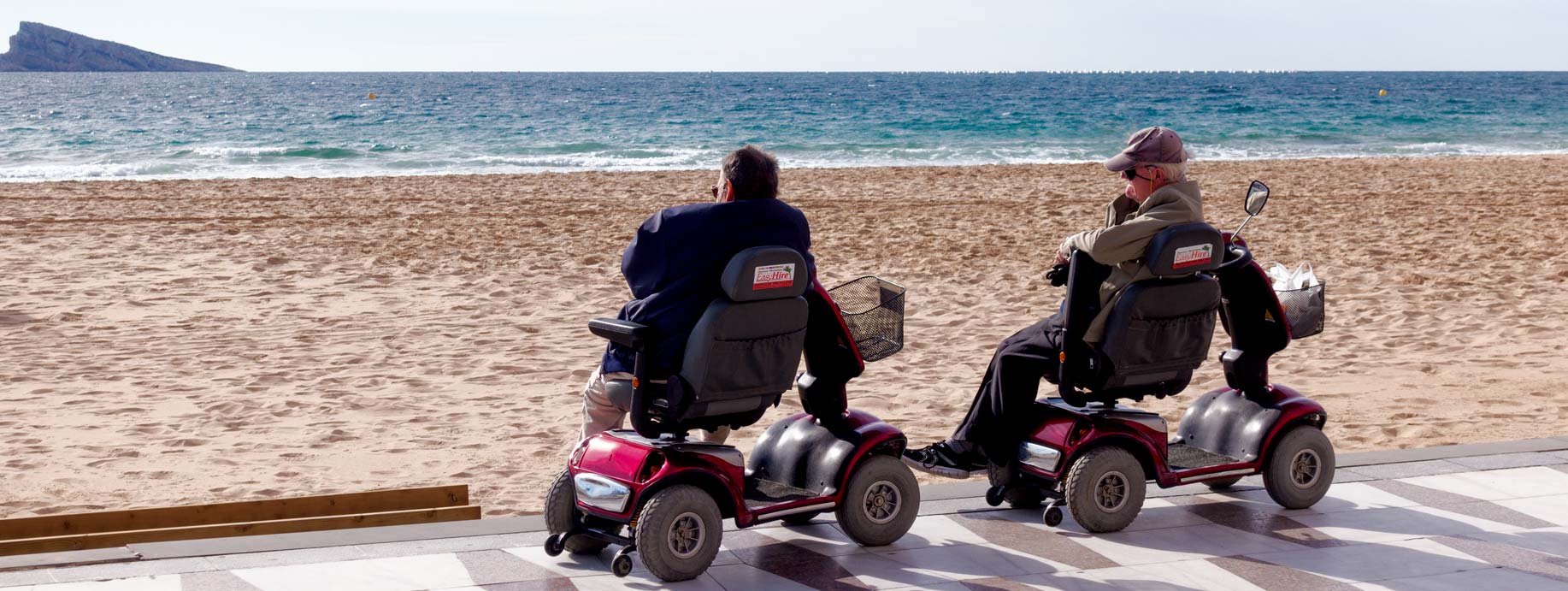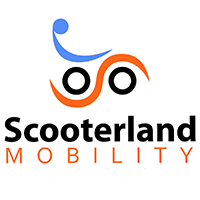What to consider before purchasing a Mobility Scooter?
There are a few different types of Mobility Scooters. Standard, Portable (Pull-Apart), and Travel (Foldable) scooters, all are suitable for the specific use they were designed for.
Standard mobility scooters are more suitable for outdoor use and depending on whether you get a small, medium, large or larger model, will depend on the criteria of your requirements, such as expected gradients, users’ weight, the distance required to cover, and the expected terrain.
In general, the bigger the hills and rougher the terrain that is needed to be transverse, the bigger the scooter will need to be. Portable scooters are ideal for putting in the back of a car and can be used in areas with small gradients and smooth terrain going to the shopping centers, day trips to generally flattish areas. Whereas the Travel scooter has been designed to suit the traveler on cruises for example but to some extent can be put in the back of a car and used as a portable scooter as it would have basically similar operational limitations.
Consider the following before purchasing a Standard Mobility Scooter:
- Is there access to safe and adequate footpaths to all key destinations I need to reach?
- Does the scooter have enough range to get where I need to go?
- Can the scooter fit through doorways?
- Do I have to cross many main roads? Is it safe to do so?
- Where will the scooter be stored? It will need to be parked somewhere safe and within reach of a PowerPoint to recharge the battery?
- What inclines do I need to go up and how steep are they?
- What is the terrain like – rough roads, big curbs, etc.?
Do I have to have a Driver’s Licence to drive a Mobility Scooter in Queensland?
No, you are not required to have a license but you must have a doctor’s certificate verifying that owing to severe mobility impairment there is a need for assisted travel i.e. you need a mobility scooter/wheelchair to get around.
Fees and Charges for Registration
There are no fees for registration or compulsory third-party (CTP) insurance for mobility scooters. However, free CTP insurance is provided by the Nominal Defendant, if the mobility scooter is registered.
There are also no transfer fees for Mobility Scooters.
The Nominal Defendant is a statutory body established under the Motor Accident Insurance Act 1994 for the purpose of compensating people who are injured as a result of the negligent driving of unidentified and/or uninsured (no compulsory third party insurance) motor vehicles.
We do recommend that you have an insurance policy to cover personal injury and damage to your scooter. You can find more information in our resource section under the insurance.
Scooter/Wheelchair Registration
The following information is required to register your scooter in Queensland:
- A Vehicle Registration Application form (F3518)
- A Vehicle Details form (F3529)
- A Motorised Wheelchair Statement form (F4414)
- The evidence of the vehicle’s origin – former registration papers or purchase receipt
- Evidence of the vehicle’s garaging address – Queensland driver license, rates notice, electricity or phone bill
- Evidence of personal identification – Queensland driver’s license. Other means of ID can be found at Evidence of Identity Information Sheet (F4362)
We do recommend that you get a doctor’s letter and find your Driving Licence No. or Customer Reference No.from Queensland Transport, we can assist with the rest of the registration paperwork if needed.
Queensland Road rules for Mobility Scooters
The driver must be capable of operating the machine safely and must observe all Queensland Road Rules as well as those relating to pedestrians. The definition of ‘pedestrian’ in the Transport Operations (Road Use Management) Act 1995 (p. 528) includes references to a motorized wheelchair.
Queensland Road Rules include:
- Giving way to other road users on a path or nature strip
- Exercising due care and attention for the safety of others at all times
- Driving on the footpath or nature strip at all times and only using the road when the footpath or nature strip is not suitable
- If driving on the road you must drive as close to the side of the road as possible and face oncoming traffic (except for a one-way street)
- Using the most direct route available when crossing a road
- Traveling at no faster than 10km/h
- Driving on the road alongside no more than one other pedestrian or vehicle traveling in the same direction, unless it is necessary to overtake other pedestrians comply with other road rules as they apply to pedestrians
Mobility Scooter Safety
Users should take care when riding mobility scooters and observe the following Safety Guidelines:
General
- Stay within the legal speed limit of 10 km/h.
- Be aware that taking medication or driving under the influence of alcohol may affect the user’s judgment.
- If you are carrying parcels, ensure that the load will not over-balance your motorized mobility device and that the parcels do not interfere with your controls or vision.
Protective gear
- Always make sure that you are clearly visible, particularly at night or on dull days—use the lights and reflectors and install a reflective safety flag at a height detectable to motorists.
- Wear a bicycle helmet whenever possible.
- Pedestrians and footpaths
- Slow down when you are near other people, especially pedestrians and cyclists.
- Avoid stopping or driving on inclines greater than your scooter’s capabilities.
- Use footpaths if possible. If there are no footpaths, plan to use quieter roads.
- Plan your trip and avoid uneven surfaces, dips, and potholes.








